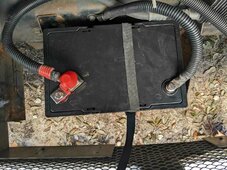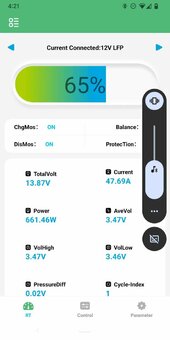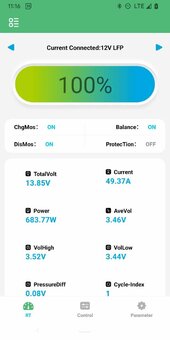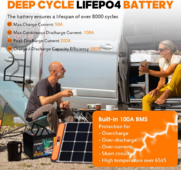I dont think any 'limiting' is going on whatsoever.
In the first place, most BMS's have no way to limit charge current. Some can communicate a 'desired' charge current to a compatible charge source, but the only thing the BMS can do is totally disconnect the battery from its terminals, but nothing in between.
I think the time vs amps behavior is exactly as expected. Any car will have high charging amps right after startup as the battery 'recovers' from the cranking event, but it tapers drastically within the first <30 seconds, and then tapers more as the alternator lowers its 'target' voltage sometime in the first several minutes. Typically alternators will try to hit ~14v immediately after startup but most modern charging systems then taper off to something in the low 13s. There's a ton of variability in the wide world of cars but this is a fair generalization in my opinion.
Notice that the current going to the lead acid is tapering much more quickly than the current going to the lifepo4. The chunk of SOC consumed by cranking represents a larger change in terminal voltage on the lead battery, AND the lead battery recovers more slowly to its 'resting' voltage, so it 'accepts' more charge current from the source than the LFP which had much less voltage sag from the cranking event and then recovered to its 'resting' voltage almost instantly.
My 120ah LFP in my conversion van will accept about 60-70a continuously until it reaches the alternators voltage setpoint which is low 14s. Your 100ah is accepting 60+ very briefly before tapering to a very steady ~50a, which is in exact proportion to the results on my van. I personally think all is well here. You MIGHT have a heat issue with the alternator but i dont think the changes in current you're seeing represent the alternator 'derating' from heat. If it hasn't done anything more drastic in 30 minutes of idling i dont think it ever will as that is plenty of time to reach a steady state temp. However, it is true that the brushes in the alternator will wear out quicker if they pass higher current, so in general using the alternator harder does result in the brushes wearing out quicker. But quicker might be in 50,000 miles instead of 100,000 miles. I'd be surprised if you didn't get a pretty decent lifespan doing 78A out of a "110a" alternator, even at idle.







